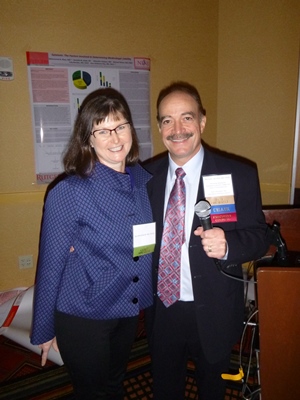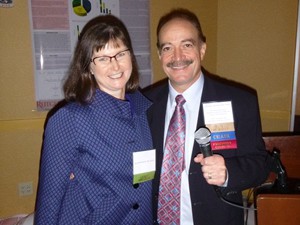Dr Gillian Dunlop has a dual career as an international portrait artist and rhinoplasty surgeon and is a member of the Australasian Academy of Facial Plastic Surgery.

Q: What is new in Rhinoplasty?
Traditionally, rhinoplasty involved significant changes to achieve a new glamorous look, such as a scooped out profile and narrowing of the nasal tip. These days we appreciate that minimal change has more significant impact. If I can create an unremarkable, normal looking nose, the focus is on the eyes. Essentially, rhinoplasty is now about balance and facial harmony.
Q: How does painting and sculpture influence your role as a rhinoplasty surgeon?
In my surgery I use my skills as an artist. Painting and sculpture are all about looking at the way light falls on an object. The line made by the reflection of light – which artists call the light reflex – gives the sculpture form and shape. The same applies in portraiture and in rhinoplasty. The light reflex gives the nose definition and grace. In rhinoplasty if I can get the light reflex right, the nose will photograph well.
Q: What made you enter this field? Did if follow being an ear nose and throat (ENT) surgeon and how long have you been a rhinoplasty surgeon?
After coming dux of Year 12, I announced I was heading to art school. My father replied: “I am not supporting you for the next 35 years. Get a job!” And rhinoplasty was the most creative job I could find. I have been operating for 20 years. Every day I get to make art and I appreciate my father’s advice.

Q: What is the most frequently asked question from your patients?
How soon can I get it done!
Q: What are the challenges facing the industry?
Dispelling a public perception that glamourises and trivialises the serious nature of the surgery involved. Rhinoplasty is a three hour operation under general anaesthetic, followed by 18 months of healing and regular post-operative visits. Nobody gets away from the fact that they are a patient. My role as a surgeon is to guide people through the procedure.
Q:What was the bravest decision you ever made?
As a woman applying for a training position as an ENT surgeon. I am the second in New South Wales. We simply did not have any mentors.
Q: You were in New York recently where you presented to the American College of Surgeons on ‘Rhinoplasty and the Mona Lisa Smile.’ Can you give us some details about this?
Firstly, I discussed how Leonardo de Vinci, and other artists, used the light reflex falling along the line between the eyebrow and the tip of the nose to give a portrait, such as the Mona Lisa, definition and form. The same principle applies in rhinoplasty. Secondly, I explored the need to focus on the three-quarter angle of the face. Nobody talks to your profile with most people addressing you from a three-quarter angle. Lastly, the raison d’ệtre of a modern facial plastic surgeon is to imitate nature and aim for subtlety, allowing the eyes to dominate. If you look at the Mona Lisa, Leonardo has used minimal emphasis on the nose so focus is on the facial expression.
For more information visit www.artofrhinoplasty.com.au

